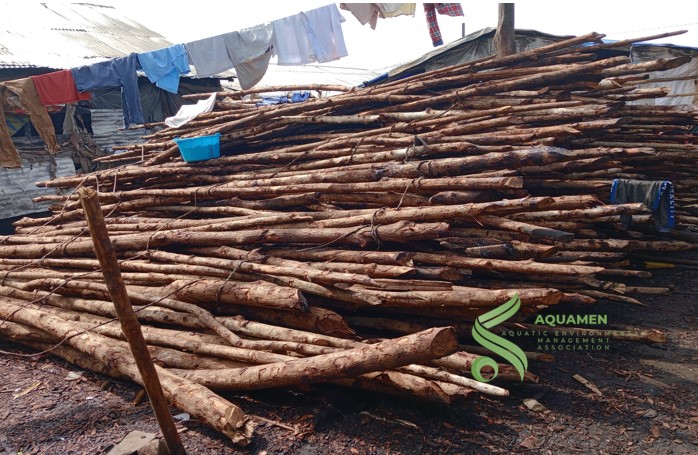
Integrated management of mangroves in Cameroon with stakeholders and effective involvement of the local riparian community.
Mangroves, coastal ecosystems located at the interface between land and sea, represent rich biotopes that play a fundamental role in protecting biodiversity, regulating local climates, and preserving coastal resources. However, these fragile environments face increasing threats, including human-induced destruction, pollution, and climate change. The Cameroonian coastline is no exception to this reality, as fishermen often cut down mangrove wood for fish smoking and house construction. In this context, integrated mangrove management emerges as an essential approach to ensure the sustainable use of these ecosystems while preserving their vital ecological functions. Consequently, AQUAMEN has committed to applying integrated management to Cameroon's mangroves, an approach that hinges on simultaneously considering environmental, economic, and social dimensions. By integrating these diverse aspects, decision-makers can formulate strategies that promote sustainable development while addressing the needs of local communities dependent on these ecosystems for their livelihoods. For example, activities such as fishing, agriculture, and tourism are closely linked to mangroves but require regulation to prevent compromising their health. AQUAMEN aims to tackle the significant challenge of coordinating efforts among the various stakeholders involved. Governments, NGOs, scientists, and local communities must collaborate to establish effective conservation and management policies. This is why we are engaged in awareness and education efforts directed at both local populations and decision-makers, fostering a deeper understanding of the issues related to mangrove degradation and its implications for daily life and the economy. We also plan to undertake the restoration of degraded mangroves, which is a key component of integrated management, but such efforts must be grounded in rigorous scientific studies that consider biodiversity and local dynamics. Additionally, monitoring mangroves through modern technologies, such as drones and satellite imagery, will provide an effective means of tracking the state of these ecosystems and evaluating the impact of implemented measures. Furthermore, it is crucial to incorporate climate change considerations into mangrove management. These ecosystems are not only vulnerable to the effects of climatic variations, but they also play an essential role in mitigating such effects by serving as carbon sinks. Investing in the resilience of mangroves against climatic hazards could, in the long run, offer solutions for both biodiversity conservation and the protection of coastal populations against extreme events. Ultimately, it is imperative that management policies remain flexible and adaptive, taking into account new scientific data and social changes. The active involvement of local communities in the decision-making process is not only ethical but also pragmatic, as their traditional knowledge and experience are invaluable assets for effective and sustainable mangrove management.